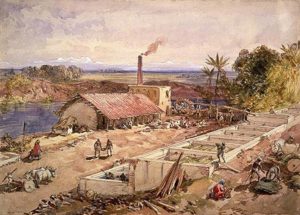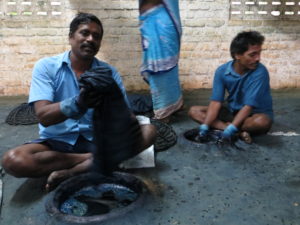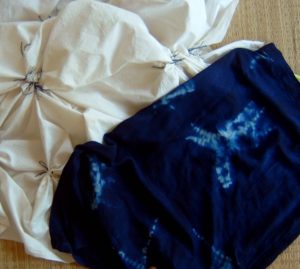Natural dyes & dyeing
 A Brief History A Brief History Did you know that natural indigo and other plant-based dyeing used to be mainstream? In Bengal alone, during the 1850’s, 3,500 tonnes of natural indigo were exported each year, with indigo cultivation and processing employing millions of people. Then, in 1897, BASF launched synthetic indigo and before long synthetic indigo had replaced most of the natural indigo. Today, it is widely acknowledged that textile industry pollution and contamination of river streams pose a risk to the environment and to human health. The Colours of Nature was created to help return natural dyes to the mainstream. (More…) |
 At The Colours of Nature At The Colours of NatureSet up as a research unit in the experimental township Auroville, in south India, in 1993, The Colours of Nature has revived the ancient traditions related to natural dyes. A long search led the Founder, Jesus Ciriza Larraona, to a small village and a family that had handed the knowledge of natural indigo fermentation dyeing down for generations. Most of our team remains until this day. We continue to explore the cultivation, harvesting and processing, adding natural elements such as sea shells, to improve our processes. Key parameters are colour palette, fastness and eco‐friendliness. We have used the same water in our vats since 1993 and no water is ever wasted. (More…) |
 Different Techniques Different TechniquesWe have mastered both Batik (wax is applied) and Shibori (the cloth is tied or stitched into folds). Both dyeing techniques are all about the creation of exciting patterns by stopping parts of the material from getting dyed, and they can also be combined. The natural indigo fermentation pots need continuous care, every day of the year, and all our work is a labour of love. Our master dyers know the ins‐and‐outs of the smells and the textures and the dips that give the best results. Generally speaking, it is the number of dips that determines the depth of a particular colour. We also have access to the best weavers, tailors and embroiderers. (More…) |